There’s a feeling I can never quite put into words, and Life is Strange: True Colours exemplifies it perfectly. It’s that sense of nostalgia for a time and place you’ve never actually lived in. I’ve personally never set foot in a small Colorado town, but for the length of True Colors’ playtime, Haven Springs felt like home.
This is technically the fourth game in the series, and in some ways it feels like it’s grown up so much. We’re not juggling our supernatural powers with academic life or going on the run any more. This time, we’re settling down. We’re learning what it means to make a home for yourself after years of being displaced, and that’s a very appropriate theme considering the road trip vibes Life is Strange 2 relied on.
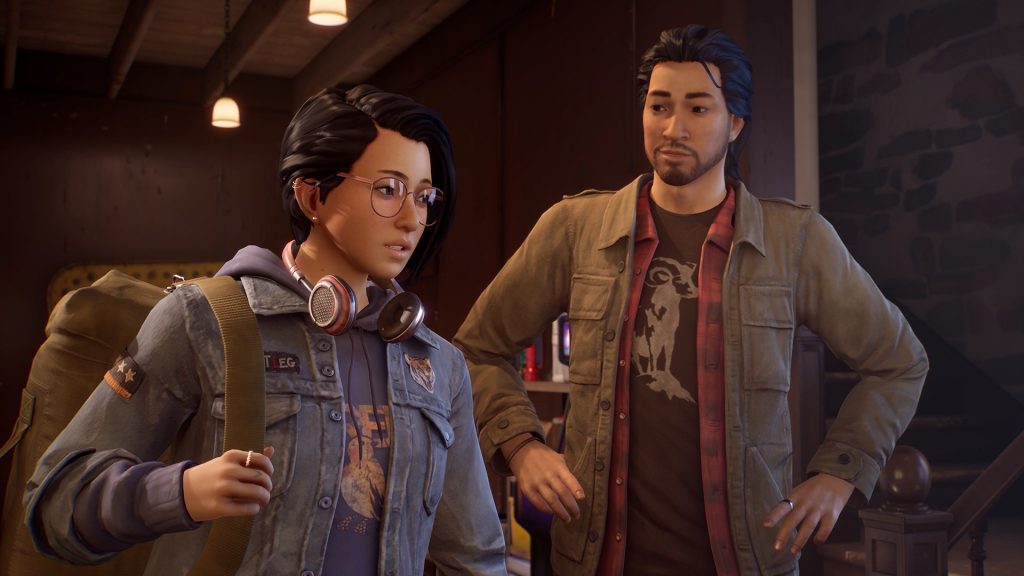
After spending years in the foster care system, Alex Chen arrives in the idyllic mountain town of Haven Springs to reunite with her long lost brother. The town is defined by those warm, autumnal tones that gave the first instalment so much of its visual appeal, and yet we’re quickly reminded how far game development has come with resplendent explosions of colour. Bursts of flowers framing a bridge, a mountainous landscape contrasting pure white with steely grey and infinite blue. The animation has seen a significant upgrade, too – True Colors is all about emotion, and the new characters are capable of expressing it beautifully.
The first episode meanders around, introducing you to the various faces and places you’ll come to know in greater detail throughout the game. Alex’s brother, Gabe, is a force of nature all by himself – you get to see the infinite positivity he radiates out to the people around him, the degree of the impact he’s made on this little part of the world despite his troubled past. And then, of course, it all gets ripped away in what seems like a freak accident.
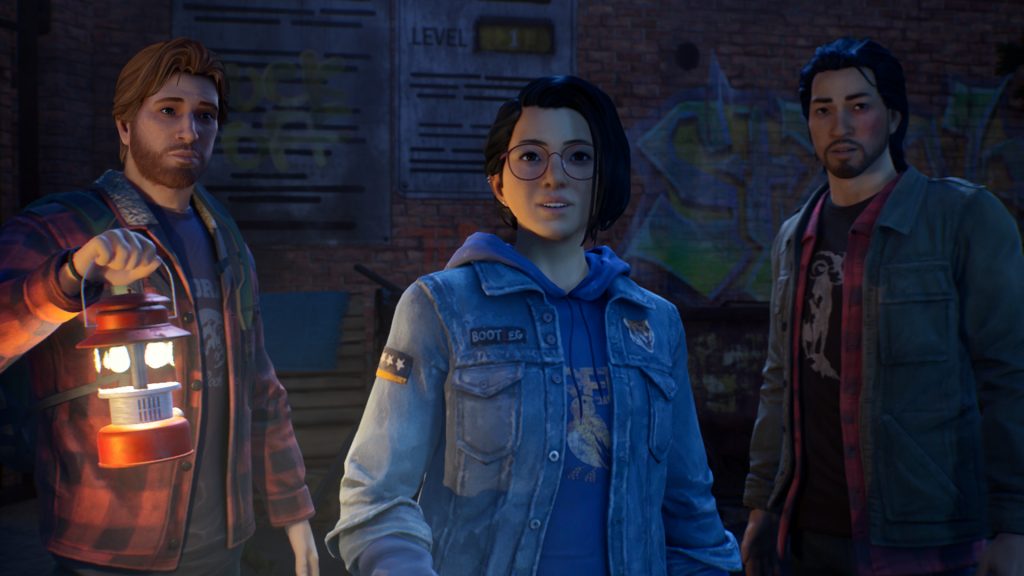
Aided by her psychic power of empathy, Alex is driven to investigate the truth behind her brother’s death, whilst doing her best to pick up the pieces he left behind. The problem is, “empathy” by itself is a pretty vague term. At first it seems fairly straightforward – you can see the emotions of other people as auras, and occasionally hear thoughts related to those feelings too. If Alex is around someone experiencing a particularly strong emotion, she can feel it too. It all makes sense for a little while, but as the game progresses her powers become wildly inconsistent.
It’s pretty clear that Alex’s empathy power just does whatever the story needs it to. After the first couple of instances, she only takes on people’s emotions by choice, never becoming overwhelmed by them again. The story never tries to justify it by saying she has greater control over it – it just kind of happens. At certain moments, Alex seems able to completely stop people from feeling a strong emotion with long-lasting consequences. There’s no real strict definition of what she can and can’t do with her powers, and the story does suffer a bit for it.
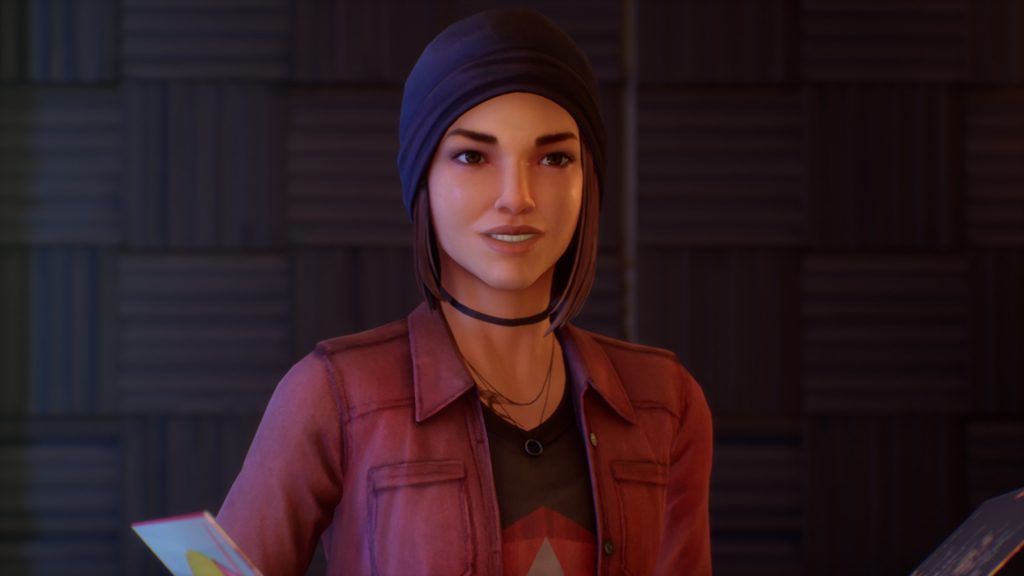
The first Life is Strange had several moments made incredibly impactful by the limitations of Max’s time travel. We knew that Max could only travel a handful of moments back at once. She had just enough time to guide conversations in the way she wanted, or to stay out of imminent danger. There were times where she needed her power the most, and it was taken away, meaning Max had to rely on her own wit and determination to survive. When she discovers she can travel further back through photographs, she’s quickly taught that doing so has terrible, unforeseeable consequences.
Alex is charming as hell, and her supporting cast is wonderful. But because her powers are basically a magical Swiss army knife that changes depending on her needs, we don’t get to see her at her best. Her powers become a crutch to get the game from one twist to the next, and while True Colors is populated by fantastic moments between characters, the main story leaves something to be desired. Alex’s power is the primary enabler of that shortcoming. But seeing her go from quietly singing Radiohead‘s Creep alone in her room to absolutely belting out Blister in the Sun by The Violent Femmes is a joy.
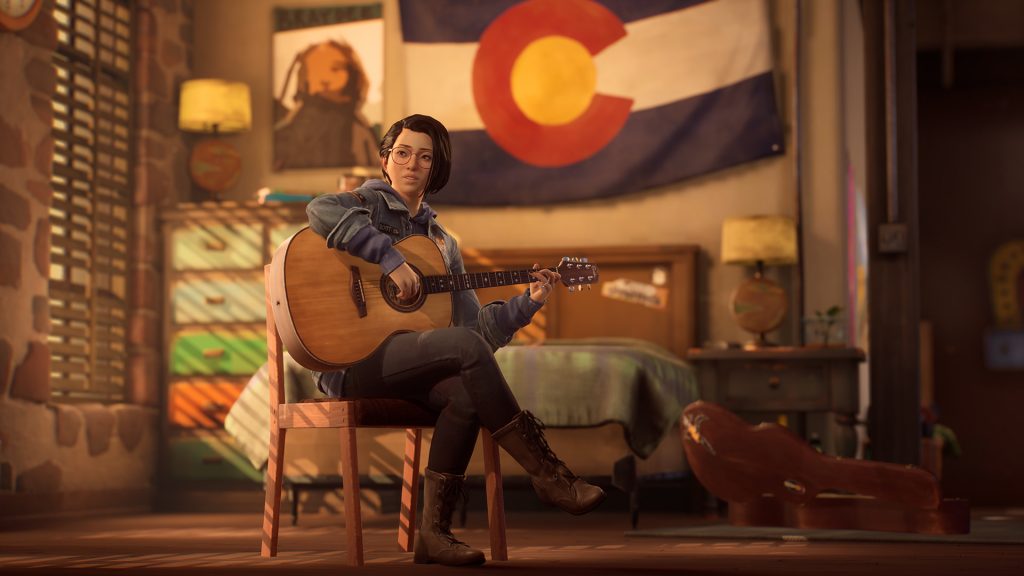
The game promises free rein of the town, and it does offer that in bits and pieces. There’s no map, which can be frustrating, but it really just adds to the theme of Alex losing herself in a new place. Haven Springs is small, but you can get lost in it, checking out the record shop, involving yourself in people’s lives in small but significant ways, or admiring one of the game’s signature zen moments. The dialogue is great – we’ve come a long way from the awkward teen simulating ways of the first game – and you will come to care about Haven Springs’ inhabitants in no time at all.
True Colors abandoned the episodic release format the series has always used in the past, which is both a good and bad thing. In practical terms, not much has changed – the game is still structured in five chapters, of varying quality and length. Realising that, after about six hours of playtime, the story was already trying to wrap up all the loose threads and bottleneck me towards the conclusion was almost tragic. From my perspective, I’d just set foot in True Colors’ world, and it was already showing me the door. It feels like each main character has their one big emotional set-piece, and the game’s over.
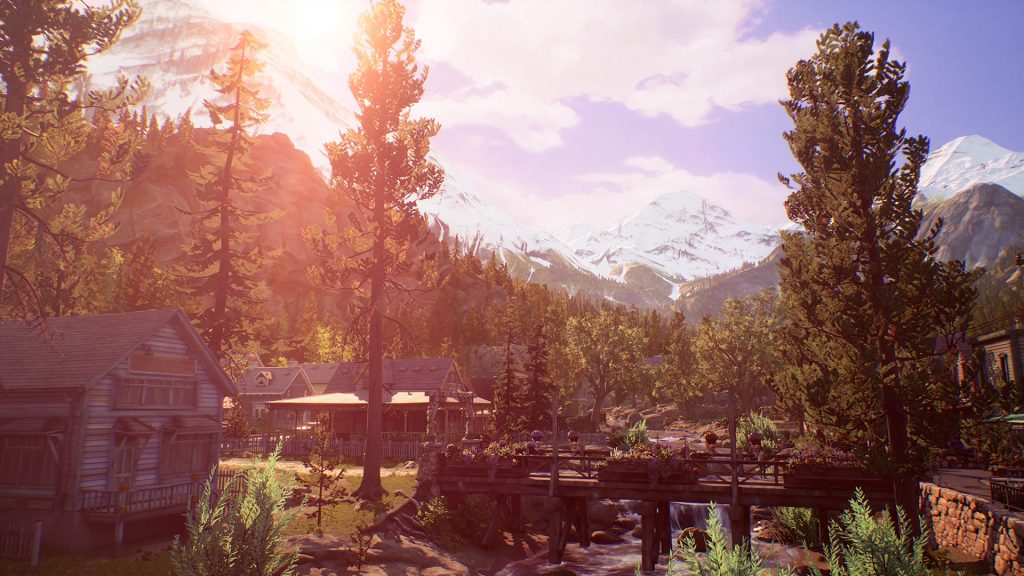
No time to confront the consequences of your choices, no character arcs like David Madsen’s. At the core, True Colors can feel like a laundry list of people’s problems to fix, just ticking them off and moving onto the next. And that doesn’t do Alex or her friends any justice. Maybe it’s because we get such a deep insight into what makes these characters tick that our time with them feels so relatively brief. True Colors delivers such intense, emotional shots of energy that leaving them behind is akin to withdrawal.
We reviewed True Colors on PS5, and despite the console’s considerable power, the game seemed to struggle performance wise in these early days after release. That’s even with the frame rate locked to 30fps, a bizarre decision in this day and age, but one that was apparently important to maintain “cinematic fidelity”. Fortunately, you’ll spend a vast majority of your time in the game watching cutscenes, where the performance chug is barely noticeable. In the moments where control is handed to you, though, even simple actions like moving the camera prevent True Colors from reaching a stable 30fps.
Life is Strange: True Colors overall thoughts
True Colors is a fantastic addition to the Life is Strange series that struggles occasionally with its main theme, but delivers basically everywhere else. Despite the performance issues, despite the brevity of the storyline and all the missed opportunities to make Haven Springs as deep and interesting as it could be, I loved True Colors. If it was even two hours longer, it’d be a 10/10, even with Alex’s inconsistent power levels nudging the story along.
Unfortunately, either way you look at it, this is a game that feels much shorter than the entries before it at double the price. The world is bigger, but you get to spend less time in it, and with such a beautiful setting it just feels like a waste. True Colors is a game about finding yourself, about learning to rely on others even when every instinct in your body tells you otherwise, and it will make you feel – there’s no doubt about that.
Life is Strange: True Colors is available now. Why not check out more of our game reviews here?